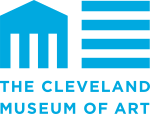Cleveland Institute of Music
1920 establishments in OhioCleveland Institute of MusicMusic schools in OhioPrivate universities and colleges in OhioUniversities and colleges established in 1920 ... and 4 more
Universities and colleges in ClevelandUniversity CircleUse American English from October 2017Use mdy dates from October 2017
The Cleveland Institute of Music (CIM) is a private music conservatory in Cleveland, Ohio. The school was founded in 1920 by a group of supporters led by Martha Bell (Mrs. Franklyn B.) Sanders and Mary Hutchens (Mrs. Joseph T.) Smith, with Ernest Bloch serving as its first director. CIM enrolls 325 students in the conservatory and approximately 1,500 students in the preparatory and continuing education programs. There are typically about 100 openings per year for which 1,000-1,200 prospective students apply. Many members of The Cleveland Orchestra serve as faculty at CIM and CIM alumni can be found in major orchestras throughout the United States and the world.
Excerpt from the Wikipedia article Cleveland Institute of Music (License: CC BY-SA 3.0, Authors).Cleveland Institute of Music
East Boulevard, Cleveland
Geographical coordinates (GPS) Address Website External links Nearby Places Show on map
Geographical coordinates (GPS)
| Latitude | Longitude |
|---|---|
| N 41.511966666667 ° | E -81.609083333333 ° |
Address
Cleveland Institute of Music
East Boulevard 11021
44106 Cleveland
Ohio, United States
Open on Google Maps





